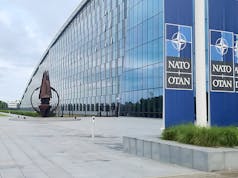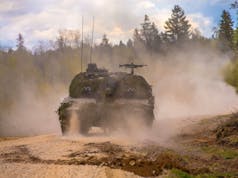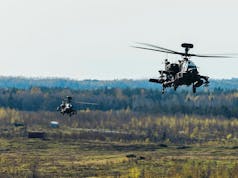Today, the work of VentilatorChallengeUK, the Consortium of UK aerospace, motorsport, automotive and medical businesses concludes after more than doubling the stock available to the NHS.
Formed on the 19th of March in response to the anticipated escalation in COVID19 cases, the Consortium has worked to deliver critical Penlon ESO 2 and Smiths paraPAC plus ventilators to the NHS throughout the crisis.
In that time, the consortium say they:
- Scaled-up the Penlon ESO2 Emergency Ventilator device which modified proven clinical equipment, and the Smiths paraPAC Plus. Both met clinicians’ requirements as understanding of the virus progressed
- Established, from scratch, seven new large-scale manufacturing facilities at Airbus AMRC Cymru in Broughton, Ford in Dagenham, GKN Aerospace in Luton and Cowes, McLaren in Woking, Rolls-Royce in Filton and STI in Hook, as well as restructuring existing sites Smiths Medical in Luton and Penlon in Abingdon.
- Ventilator peak production exceeded 400 devices a day, with the shortest time taken to achieve 1000 ventilators being 3 days
- Set- up new parallel supply chains and acquired around 42 million parts and electronic components through a complex logistics network that saw DHL design and implement an end-to-end supply chain in only 1.5 weeks
- Despite global competition for parts and lockdown challenges during the pandemic the team sourced part from over 22 countries, with the furthest distance travelled by a single part being 5,226 miles
- Achieved full MHRA approval for the Penlon ESO 2 device in just three weeks, becoming the first newly adapted ventilator design to be given regulatory authorisation as part of the UK Government’s fight against COVID19 and then going on the secure the international quality seal of approval by way of CE marking
- Recruited and trained a 3,500 front-line assembly team in a new age of social distancing, balancing the twin imperatives of speedy delivery with absolute adherence to the regulatory standards needed to ensure patient safety
VentilatorChallengeUK made its last shipment of finished ventilators on Sunday the 5th July after which Consortium businesses returned to regular production.
Dick Elsy, Chairman of VentilatorChallengeUK and CEO of High Value Manufacturing Catapult, said:
“What VentilatorChallengeUK has achieved in the space of twelve weeks is nothing short of incredible, creating and producing an approved product and setting up production facilities on this scale would normally take years. I am immensely proud of the energy, determination and ingenuity shown by every business in responding to this national need.
Together, we have helped ensure the NHS has always had access to the number of ventilators it needs, and we’re pleased to have also contributed to building a resilient stock should ventilators be required in the UK in the future.
This coalition of the very best of this country’s people and capability across different sectors has truly showcased the strength of the manufacturing industry in the UK. While we have now delivered all the required ventilators to the NHS, the Consortium is looking to capture lessons learned and share them across the engineering community – and with Government – as key tools to help UK industry get back on its feet after the COVID19 pandemic has passed.”
For contact with individual businesses please refer to:
Accenture: Andy Rowlands, [email protected]
Airbus: Ian Middleton, [email protected]
AMRC Cymru: James Crossling, [email protected]
Arrow: Thorsten Hecking, [email protected]
DHL: Richard Preece, [email protected]
Ford: John Gardiner, [email protected]
GKN Aerospace: Daniel Kendrick, [email protected]
Haas F1: Stuart Morrison [email protected]
HVM Catapult: Rosa Wilkinson [email protected]
Inspiration Healthcare: Brook Nolson, [email protected]
McLaren: Tim Bampton, [email protected]
Mercedes-AMG F1: Bradley Lord [email protected]
Meggitt: Diane Whitworth, [email protected]
Microsoft: Steve Douthwaite, [email protected]
Newton: Juliet Purcell, [email protected]
Penlon: Craig Thompson, [email protected]
PTC: Jacqui Cook, [email protected]
Racing Point: Will Hings, [email protected]
Renault Sport Racing: Lucy Gennon, [email protected]
Renishaw: Chris Pockett, [email protected]>
Rolls-Royce: Emma Fahy, [email protected]
Siemens UK & Siemens Healthineers: Anne Keogh [email protected]
Smiths Medical: Andy Collingridge, [email protected]
STFC Harwell: Amy Pollock, [email protected]
STI: Jemma Kirton, [email protected]
Thales: Jackie Lucas, [email protected]
Unilever: Helen Fenwick, [email protected]
Williams Advanced Engineering: Clare Rose, [email protected]
Williams F1:[email protected]













‘Ventex 20/1’ – UK based industry ability to ramp up critical equipment production in times of emergency:- a la Baron Beaverbrook. Nice one.
Just shows what we can do if we had to. We should make all the NHS protective gear and ventilators ect if they are to the best of current standards And in future possibly export ventilators and protective gear to poorer nations using our foreign aid budget to buy from the UK, that would help new british company’s to get established.
Well done one and all. See what we can do if we really need it. Unfortunately I was was watching Sky news the other day and a Dr from NY was explaining that immediately ventilating people was counter productive. The preferred option was found to be pressurised O2 delivered through a mask as this assisted rather than replaced lung function.
As far as I know that is correct, if a Patient has to go on a Ventilator it will result in damage to the Lungs regardless.
Yes and no. Barotrauma used to be very common. However with good quality ICU care, proning and humdification you can avoid that. Barotrauma or pressure trauma to the lungs is when the ventilator is turned up to very high pressures to deliver ventilation to very stiff, poorly compliant lungs.
A good ICU will not do this
They will allow permissive hypercapnia, deliver lung protective ventilation. Prone prone prone and humidity the ventilator circuit. In essence you should not see barotrauma in ICU patients.
This is a major part of where they went wrong.Cheap, simple ventilators do far more damage because they lack the sensors and electrics that ventilate according to demand rather than simply forcing in air. There was too much focus on doing the simple mechanical bit fast rather than listening to the experts.
Agree Grubbie. The Penlon and Smith’s medical ventilators delivered were an urgent stop gap measure so that thousands of patients were not going to die for lack of a ventilator. Problem is that long term ventilation on one of these ventilators would not have led to a good outcome. They are too basic and lacking in finesse to prevent barotrauma.
These ventilators do not deliver anywhere near the level of sophistication needed. They should be stored away as a national reserve against a 2and wave of future flu epidemic. The national supply of full ICU high quality ventilators such as Hamilton, Draeger v500s, Puritan Bennet and Sirmens needs to be increased now we have time to purchase more in. They do however cost circa £15-20K each vs less than £2k each for the ventilator challenge Penlons and Smith’s medical ventilators.
The NHS and Her Majesty Government need to just absorb that cost. Increase critical care capacity in the NHS which is woefully low compared to other developed nations and buy crucial equipment like expensive highly sophisticated ventilators and haemofilter devices. We only have less than 4000 adult critical care beds. That is terrible for a country of 66 million people. Doubling that number to 8000 is where we need to get too in the next 12 months. Problem is covid has bankrupted the country and HMG are about to start austerity mark 2 and cut cut cut cut cut. The precise opposite of what we need. All because of the advice of one idiotic man. Dominic Cummings.
Rob Cpap is the preferred treatment for covid19 type 1 hypoxia respiratory failure initially. However there are good indicators that we now understand for when a patient should be moved to intensive care and put on a ventilator. They are an inability to come of the CPAP device for short periods of time to eat and drink. Take medications etc. A worsening fatigue and escalating need for oxygen percentage and the pressure CPAP delivers called PEEP.
Cpap is good “holding” measure but is not a cure . It probably prevents 30 to 40% of covid19 patients needing ICU ventilation.
It is actually a difficult balancing act as if a patient us left on CPAP too long their prognosis is worse then if they were transferred to ICU and ventilated. Key indicators being worsening fatigue and inability to come off CPAP for breaks and to eat, drink and take medications.
I hope we see a shed load of honours going to some outstanding people (for a change) rather than the usual suspects ‘domiciled overseas for tax purposes’. Bravo!
Unfortunately this whole scheme was a dreadful mess. Of course a lot of this was inevitable in the circumstances, no one really knew what to expect and they had to try and balance extreme hast against quality. However with hindsight we can see that it was wrong to dither for a month and then issue a request for proposals, every one was desperate to help and there was no way any one could sift through the enormous numbers of companies that responded.Also many unworkable schemes were pursued, such as the red bull, Dyson and JCB efforts. These companies seem to be blameless, but were badly lead and this lead to an enormous waste of effort that would have been much better spent speeding up production of more established designs, given the skill set of these companies.
The fella that we really needed here was an RV Jones type of character who could have listened to the experts and made a judgement about who to listen to. As I say, this is not easy, but I fear that this amazing opportunity to learn will be lost by everyone attempting to cover their backs.
Again agree Grubbie. It was a mess. The penlon and Smith’s medical offerings would have meant that no patient would have immediately died for a lack of a ventilator but their outcomes on these emergency ventilators would have been very poor as they are not sophisticated enough to prevent barotrauma or effective weaning off ventilation.
Now first wave of CV19 is over we urgently need to increase our stockpile of full ICU grade ventilators and place these emergency ones into a national reserve stockpile to cover against a 2and wave or future pandemics.
Ideally the vastly increased volume would result in a massive reduction in price and an increase in efficiency of the device, particularly considering the brainpower that was deployed. Unfortunately it was misdirected and it seems that all that’s really happened is the incumbents have taken back control.